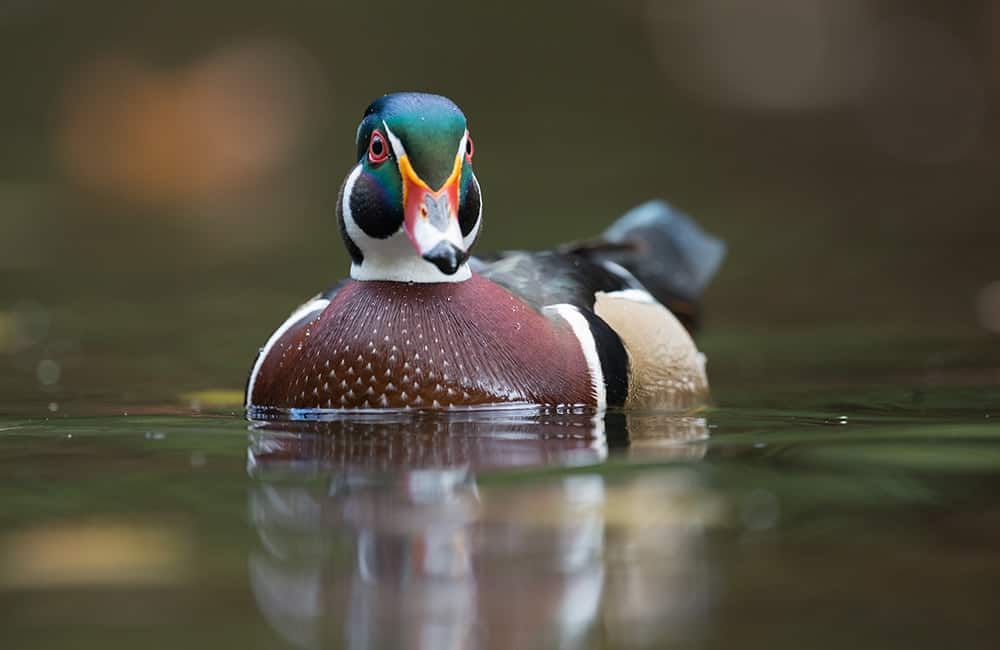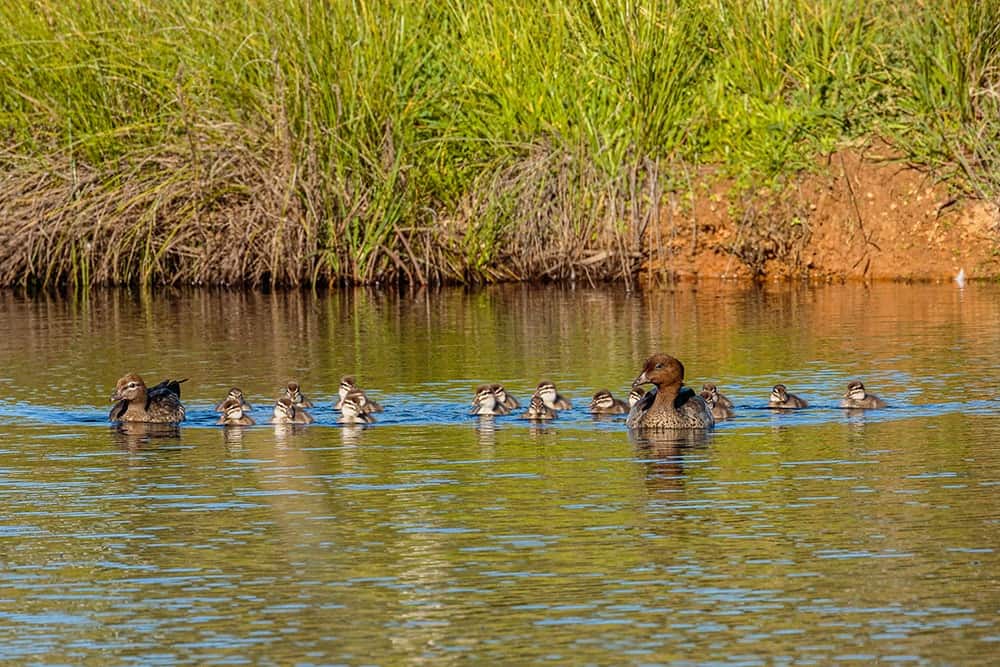If you live by a lake or swamp, you might have seen this iridescent fowl in your backyard or floating on the water. The Wood Duck has the scientific name Aix sponsa, which means “waterfowl in a bridal dress.” Perhaps they earned this name due to their beautiful markings, especially during breeding season. Wildlife paintings regularly feature this well-known bird, and the Wood Duck can be found pretty much everywhere in North America, but especially in the Eastern half of the United States where they live year-round. Continue reading to learn more about this duck species.

Quick Facts about the Wood Duck
| Breed Name: | Wood Duck (Aix sponsa) |
| Place of Origin: | Unknown |
| Diet: | Plants and insects (omnivorous) |
| Male Size: | 1-2 lbs. |
| Female Size: | 1-2 lbs. |
| Color: | Brown, black, white, blue, green in males |
| Lifespan: | 3-4 yrs. |
| Climate Tolerance: | Hardy |
| Wingspan: | 26-28 in. |
Wood Duck Origins
The Wood Duck mostly lives in North America. We don’t know exactly where they originated from, but they are considered an invasive species when introduced to England and Wales.


Wood Duck Characteristics
These birds source their food predominantly from plants, but they also eat insects. They eat more meat while they’re young, including small invertebrates and even small fish. As they grow older, they transition to a mainly vegetarian diet of nuts, seeds, and plants, but still occasionally indulge in a meaty treat, especially in the winter if acorns are scarce.
These birds value their community and are considered non-migratory in the Eastern United States and along the Pacific Coast.

Appearance & Varieties
The male Wood Duck is strikingly colored, especially during breeding season. In addition to the blue feathers they keep year-round, during mating season they have a green shiny head and long feathers draping down the back of their neck. When it isn’t mating time, they grow more muted gray feathers on their heads similarly to those of the female. The Wood Duck has black and white bands all over its body, which is mostly motley brown.
The female Wood Duck is similarly sized, but her colors are more muted. She had a gray head that doesn’t have the long feathers on the back like the males do. She has a special white ring of feathers around each eye. Like the males, she does usually have blue feathers on her back.

Habitat
Water is the Wood Duck’s best friend. These birds like to make nests predominately in tree cavities by bodies of water. Though the Wood Duck prefer waterfront property, they can build nests up to a mile away.
If you would like to help the Wood Ducks, consider building nesting boxes if you live near a river, lake, or swamp. Wood Ducks love to live in tree cavities along the banks of the water, but sometimes space is scarce. If you build your own nesting box, it should be elevated so that racoons and squirrels can’t eat their eggs and spaced a good distance apart so the female Wood Ducks don’t fight over nesting areas.
The Pennsylvania Game Commission offers free plans if you want to DIY, or you can purchase a pre-made nesting box from them as well.

Are Wood Ducks Good for Small-Scale Farming?
It’s illegal to own a Wood Duck. They were once an endangered species, but thanks to temporary limits on hunting and human-built nesting boxes, Wood Ducks are back on the rise. You can hunt them with a permit, but you can’t keep them as pets. This is a good thing because ducks are social animals who like to congregate with other ducks in the wild.

Conclusion
The beautiful Wood Duck can be found almost everywhere in the United States where there is water, but especially along the Pacific and Gulf Coasts. Though you can’t own one as a pet, you can help this dazzling creature by placing nesting boxes near water where they like to live. They were once considered an endangered species, but thanks to the efforts of bird-conscious folks who provided nesting boxes, it looks like this fowl is here to stay.
See also:
Featured Image Credit: wam17, Pixabay
